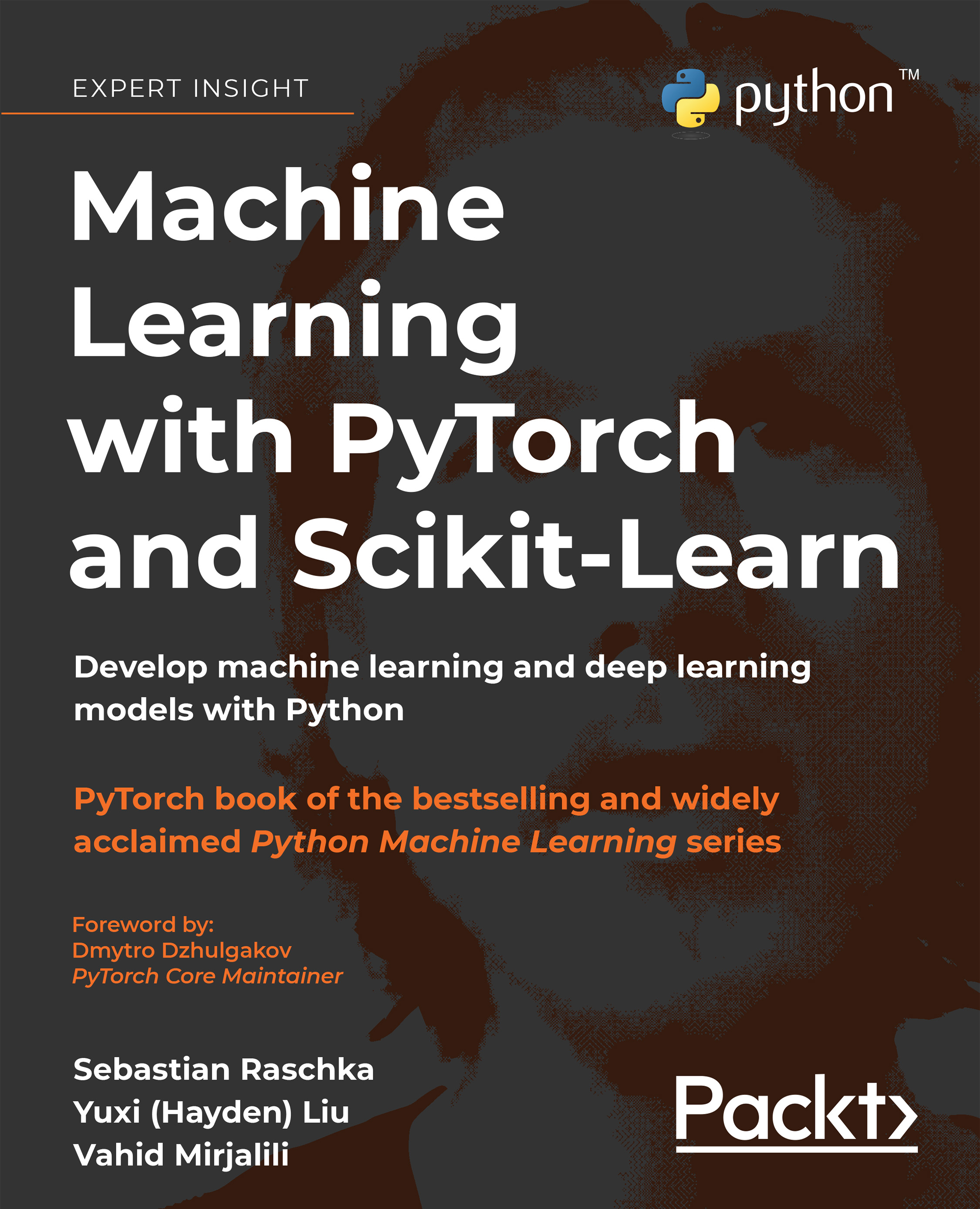To get the most out of this book
Ideally, you are already comfortable with programming in Python to follow along with the code examples we provide to both illustrate and apply various algorithms and models. To get the most out of this book, a firm grasp of mathematical notation will be helpful as well.
A common laptop or desktop computer should be sufficient for running most of the code in this book, and we provide instructions for your Python environment in the first chapter. Later chapters will introduce additional libraries and installation recommendations when the need arises.
A recent graphics processing unit (GPU) can accelerate the code runtimes in the later deep learning chapters. However, a GPU is not required, and we also provide instructions for using free cloud resources.
Download the example code files
All code examples are available for download through GitHub at https://github.com/rasbt/machine-learning-book. We also have other code bundles from our rich catalog of books and videos available at https://github.com/PacktPublishing/. Check them out!
While we recommend using Jupyter Notebook for executing code interactively, all code examples are available in both a Python script (for example, ch02/ch02.py) and a Jupyter Notebook format (for example, ch02/ch02.ipynb). Furthermore, we recommend viewing the README.md file that accompanies each individual chapter for additional information and updates
Download the color images
We also provide a PDF file that has color images of the screenshots/diagrams used in this book. You can download it here: https://static.packt-cdn.com/downloads/9781801819312_ColorImages.pdf. In addition, lower resolution color images are embedded in the code notebooks of this book that come bundled with the example code files.
Conventions
There are a number of text conventions used throughout this book.
Here are some examples of these styles and an explanation of their meaning. Code words in text are shown as follows: “And already installed packages can be updated via the --upgrade flag.”
A block of code is set as follows:
def __init__(self, eta=0.01, n_iter=50, random_state=1):
self.eta = eta
self.n_iter = n_iter
self.random_state = random_state
Any input in the Python interpreter is written as follows (notice the >>> symbol). The expected output will be shown without the >>> symbol:
>>> v1 = np.array([1, 2, 3])
>>> v2 = 0.5 * v1
>>> np.arccos(v1.dot(v2) / (np.linalg.norm(v1) *
... np.linalg.norm(v2)))
0.0
Any command-line input or output is written as follows:
pip install gym==0.20
New terms and important words are shown in bold. Words that you see on the screen, for example, in menus or dialog boxes, appear in the text like this: “Clicking the Next button moves you to the next screen.”
Warnings or important notes appear in a box like this.
Tips and tricks appear like this.
































































